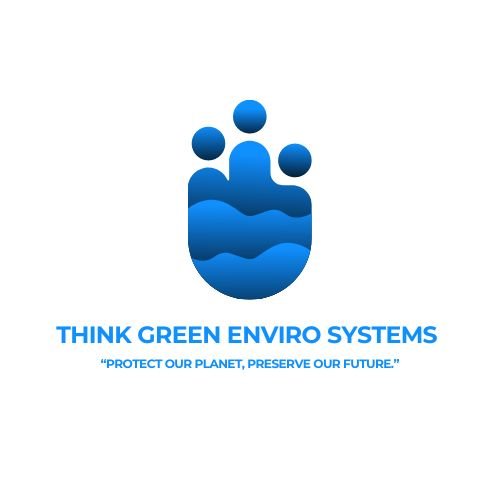Overview of Environmental Impact Assessment,
Evaluating a proposed project’s or development’s possible environmental implications is the process of doing an environmental impact assessment, or EIA. This entails taking into account its interrelated positive and negative effects on human health as well as social, economic, and cultural aspects. Predicting environmental impacts in the early phases of project planning and design, finding strategies to reduce negative effects, customizing projects to the local environment, and providing options and projections to decision-makers are the goals. Before making choices, the United Nations Environment Programme (UNEP) states that an environmental, social, and economic impact assessment (EIA) is a tool used to identify the potential effects of a project. The Environment Protection Act of 1986, which contains numerous regulations pertaining to the EIA procedure and methodology, provides legal support for EIA in India.
Importance of Environmental Impact Assessment,
The significance of Environmental Impact Assessment (EIA) includes:
01
Promotes Sustainable Development
EIA establishes a link between the environment and development, promoting environmentally safe and sustainable progress.
02
Cost-Effective Mitigation
EIA offers a cost-effective approach to reduce or prevent the negative consequences of development projects.
03
Informed Decision-Making
EIA helps decision-makers evaluate the environmental impact of development activities long before implementation.
04
Encourages Mitigation Strategies
EIA fosters the implementation of mitigation strategies within the development plan.
05
Ensures Environmental Soundness
EIA fosters the implementation of mitigation strategies within the development plan.
Projects Covered Under Environmental Impact Assessment,
The list of projects that require Environmental Clearance (EC) under the EIA includes:
- Extraction of minerals through mining activities
- Exploration, production, and development of offshore and onshore oil and gas resources
- Construction of river valley projects
- Establishment of thermal power plants
- Implementation of nuclear power projects and processing of nuclear fuel
- Operation of coal washeries
- Processes involved in mineral beneficiation
- Setting up of cement plants
- Activities related to the petroleum refining industry
- Operation of coke oven plants
- Milling of asbestos and production of asbestos-based products
- Manufacturing of chlor-alkali products
- Operation of metallurgical industries, both ferrous and non-ferrous
- Production of soda ash
- Manufacturing of synthetic organic chemicals
- Operation of distilleries
- Establishment of integrated paint industry
- Processing of leather, skin, and hides
- Production of chemical fertilizers
- Manufacturing of pesticides and pesticide-specific intermediates (excluding formulations)
- Production of petrochemicals
- Manufacturing of manmade fibers
- Processing of petrochemical-based products
- Operation of pulp and paper industry (excluding paper manufacturing from waste paper and ready pulp without bleaching)
- Activities related to the sugar industry
- Construction and operation of oil and gas transportation pipelines
- Handling and storage of hazardous chemicals in isolated facilities
- Development of physical infrastructure such as airports, breaking yards, industrial estates/parks/areas, Export Processing Zones (EPZs), Special Economic Zones (SEZs), Biotech Parks, Leather Complexes, ports, harbors, and highways
- Setting up of Treatment, Storage, and Disposal Facilities (TSDFs), Common Effluent Treatment Plants (CETPs), and Common Municipal Solid Waste Management Facilities (CMSWMF)
- Construction of buildings and execution of construction projects
- Development of townships and area development projects
Factors in Environmental Impact Assessment.
Specific factors usually included across all sectors in EIA:
- Project Description: Overview of the proposed project, including its geographical, ecological, social, and temporal context. It may also mention any off-site investments that might be necessary and indicate the need for a social development or resettlement plan.
- Baseline Data: Description of existing biological, physical, and socio-economic conditions surrounding the project site, including any anticipated changes before the project commences.
- Environmental Impacts: Prediction and assessment of the project’s expected positive and negative impacts, expressed in quantitative terms. Identification of potential mitigation measures and examination of any unavoidable adverse environmental effects. Exploration of opportunities for environmental improvement.
- Alternatives Analysis: Comparison of viable alternatives to the proposed project, considering aspects such as site, technology, design, and operation. This analysis includes a comparison of the potential environmental impacts, the feasibility of mitigating these impacts, capital and recurring costs, suitability for local conditions, and reduction potential.
- Environmental Monitoring Programme: Measures implemented during the construction and operation phases to mitigate, monitor, and manage adverse impacts, aiming to bring them to acceptable levels.
- Consultation: Records of advisory meetings, including those held to gather input from project-affected people (PAPs), local non-governmental organizations (NGOs), and governmental authorities. Additionally, it should disclose the consultants involved in the study.
- Summary: Concise overview of the project’s rationale and strategies employed to mitigate adverse effects.
Process of Environmental Impact Assessment,
Specific factors usually included across all sectors in EIA:
- Screening: Evaluation of the project plan based on factors such as investment scale, location, type of development, and the need for statutory clearance.
- Scoping: Determination of the potential impacts of the project, the affected areas, possibilities for mitigation, and the requirement for monitoring.
- Collection of Baseline Data: Assessment and documentation of existing environmental conditions of the study area.
- Impact Prediction: Prediction of both positive and negative impacts, considering factors like their reversibility, irreversibility, and temporary or permanent nature. A thorough understanding of the project by the assessment agency is crucial for accurate predictions.
- EIA Report: The EIA report includes proposed actions and steps to prevent, minimize, or offset the anticipated impacts. It also addresses the level of compensation necessary for potential environmental damage or loss.
- Public Hearing: Once the EIA report is completed, the public and local environmental groups residing near the project site may be informed and consulted.
- Decision Making: The Impact Assessment Authority, along with experts, consults the project-in-charge and consultants to make the final decision, considering the EIA and the Environment Management Plan (EMP).
- Monitoring and Implementation: The different phases of project implementation are closely monitored to ensure compliance with the environmental management plan.
Process of Environmental Impact Assessment,
The EIA report is compiled based on the Terms of Reference (TOR) established during the Scoping phase. The required documents include:
- General project information, such as project name and location.
- Specifics regarding project-related activities, including area distribution, water requirements, and waste generation.
- Details about the utilization of natural resources in the project.
- Identification of substances or materials that may pose hazards or be harmful.
- Assessment of pollution emissions into the air, soil, and waterways.
- Evaluation of noise, vibration, light, and heat emissions.
- Analysis of the risk of accidents.
- Consideration of factors that may have cumulative or consequential effects.
- Information regarding environmentally sensitive areas in the vicinity of the project site.
- Site/layout plan.
- Documentation of installed machinery.
- Proof of land ownership.
- Identification proof of the signatory.
- Quality test reports, as applicable.
- Evidence of mitigation measures adopted.
- Proof of electricity and water connections.

Additional Information
Requirement as per the 2006 Amendment
01
Category A Projects
These projects mandatorily require environmental clearance and do not need to undergo screening
02
Category B Projects
Must undergo a screening process and are classified into two types:
03
Category B1 Projects
Mandatorily require EIA.
04
Category B2 Projects
Do not require EIA.
we will assist you 24/7
Quick Contact
Frequently asked questions
Most frequent questions and answers
How Think Green Enviro Systems Assists You?
The State Level Environment Impact Assessment Authority (SEIAA) and State Level Expert Appraisal Committee (SEAC) mandate the environmental impact assessment. The public can be involved in the EIA for the authorization of the proposed project throughout the EIA procedure until the authority issues the final approval.
Who approves EIA in India?
It is a government policy that any industrial project in India must secure EIA clearance from the Environment Ministry before approval.
Which ministry in India is responsible for making EIA?
The Ministry of Environment, Forest, and Climate Change supervises the EIA in the country.
Which ministry issues EIA?
Environmental clearance or EC is granted by the Impact Assessment Agency (IAA) in the Ministry of Environment and Forests of India.
Which is the competent authority for notifying the EIA notification in India?
The Ministry of Environment, Forest & Climate Change is the competent authority for notifying the EIA notification in India.
What are the typical difficulties encountered when carrying out PO requests?
In what way can your services assist in carrying out PO orders?
How is EIA carried out in India?
The EIA process involves steps such as Screening, Preliminary Assessment, Scoping, public hearing, and appraisal, carried out by the project proponent.
Think Green Enviro Systems
Head Office
- Gupta Tower, M3 , 1th floor, Commercial Complex, Azadpur Delhi 110033
- +91 9667607283
- 011 4023 4707
- thinkgreenenvirosystems@gmail.com
